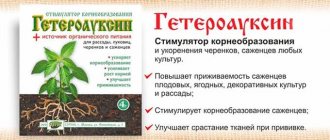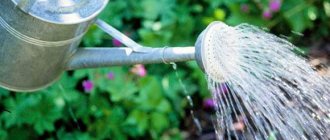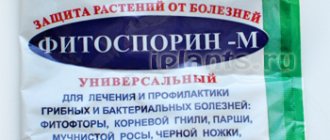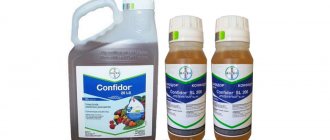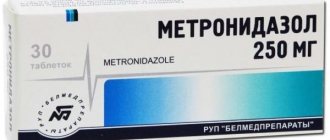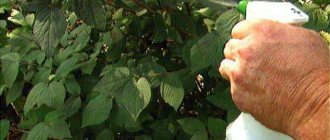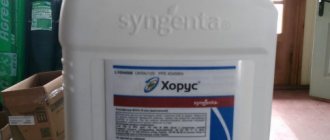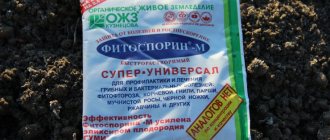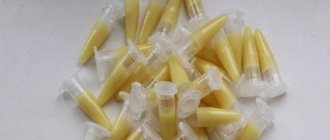Fertilizer Epin - instructions for use and benefits for plants
Plants, like other living organisms, are susceptible to various diseases - pest invasion, exposure to high and low temperatures, etc. To protect garden crops from fungi, viruses and other disasters, as well as to feed them, today there are many drugs, and one of the most popular is Epin, the instructions for use of which will confirm its effective effect on plants.
Epin is a substance of artificial origin that acts on plants by analogy with natural biostimulants - a crop treated with this additive becomes stronger, more resilient, and activates its own protection from external influences. After using Epin, the amount of harvest increases noticeably, which ripens 10-14 days earlier than expected.
- So, what can you expect when using this drug on your own personal plot:
- Plants begin to bear fruit ahead of schedule, and the amount of harvest increases noticeably;
- Seeds treated with Epin germinate faster;
- Under the influence of the product, seedlings take root better, the same can be said about the picking procedure;
- The treated plant receives an effective protective barrier from the negative effects of fungi, infections, and parasites;
- The drug effectively removes heavy metal salts and other substances harmful to humans from cultivated plants and their fruits;
- After treatment with Epin, weak plants become stronger and their proper metabolism is restored;
- After spraying with Epin, old plants are rejuvenated - this occurs due to the increase in new young shoots.
There are several methods for using this product, but experts and experienced gardeners recommend giving preference to treating plants before planting. Epin is a fertilizer that is absolutely safe for humans and pets, so you can safely use it not only on flowers, but also on vegetable crops.
Also read: How to prepare seeds for sowing?
Possible harm and precautions
The solution does not pose a serious danger to humans, domestic animals, fish, and does not pollute the environment. It belongs to class 3B (low hazardous), which is due to the content of ethyl industrial alcohol.
Precautionary measures:
- use protective clothing, gloves, mask, goggles;
- When spraying, remove animals and children from the premises. Keep the drug out of their reach;
- prepare fertilizer in a separate container not intended for food purposes;
- when processing, refuse to eat, drink, or smoke;
- in case of contact with unprotected areas of skin, wash off with soapy water;
- if the composition gets into your eyes, rinse with Miramistin;
- wash your face, hands, rinse your mouth after spraying.
Rules for using the drug Epin - how to dilute
The release form of the drug Epin is ampoules with a volume of 0.25 ml; one such ampoule is enough for 5 liters of water, and this is the optimal concentration of the solution, suitable for spraying most garden crops . Watering with Epin and the process of preparing the solution has several nuances that must be taken into account:
- In dissolved form, the product is suitable for use only for 48 hours, but it will give a really strong effect only if it is used immediately after preparation;
- It is not recommended to store the solution in direct sunlight;
- It is best to store the prepared product in a cool, dark place;
- Before using the product, you must read how Epin is prepared; the instructions for use contain proportions for various types of plants;
- It is recommended to use the solution no more than once every 2 weeks;
- Spraying must be carried out in the evening hours, when the plants no longer receive sunlight;
- Epin is not harmful to human health, however, it is best to work with this substance while wearing gloves.
It is optimal to use Epin for young shoots prepared for planting in open ground, as well as for individuals affected by the negative effects of the environment - temperature, infections, insects.
Before you start spraying, the plant must be prepared - all diseased or mechanically damaged branches and stems must be pruned, insects and their children must be removed from the plant, the soil at the roots must be loosened, and fertilized with organic means. Then you can move on to spraying - you need to spray all parts of the plant with the solution - the trunk, foliage, base.
Epin-Extra, how to breed it - indicated on the packaging, suggests its own norm for each garden crop:
- Potato tubers must be sprayed with the solution 2 hours before planting in the ground;
- Leave vegetable seeds in a solution prepared in the proportion of 2 drops to half a glass of water for 4 hours;
- Seeds of flowering outdoor plants are soaked in a solution of 4 drops of Epin in half a glass of water;
- Leave flower tubers and bulbs in the solution for a day, cuttings of garden trees for 12 hours (proportions: 1 ml per 2 liters of water).
Plants can be sprayed during the period of growth and development; each crop has its own irrigation time:
- Epin for tomatoes is recommended at the very beginning of the appearance of buds and during the flowering of the first cluster;
- Potatoes are irrigated during bud formation;
- It is better to spray cucumbers in the growth phase of the third leaf, then during the budding period;
- Onions are processed during the growth period of the fifth leaf;
- The cabbage is sprayed after the formation of a full rosette.
Storage rules, price and analogues
The product should be stored at a temperature range of -5+25 degrees, isolated from medications and food. The place must be protected from access by animals and children. The price of a 50 ml bottle is 288 rubles, 1 ml ampoules are 13 rubles.
The analogue of the active substance is ComCat (Germany). This is an extract from wild plants containing natural phytohormones. Epin is replaced with other growth stimulants, for example, Agat-25 K, Ribav-Extra, Narcissus, Prorostok, Atlet, Corvitol.
Synthetic hormones successfully help indoor flowers. Use Epin-extra to care for your home greenhouse - the plants will respond with lush green mass and abundant, long-lasting flowering.
5 / 5 ( 1 voice )
Is it possible to water indoor flowers with Epin?
The question often arises: is it possible to water indoor flowers with Epin? Experienced flower growers answer - yes, you can! For flowers on your windowsill, this drug is no less useful than for garden crops - it is also used for effective germination of plants from seeds, when transplanting and planting potted flowers.
Thanks to Epin, old plants rejuvenate, begin to actively produce green mass and bloom, their level of protection from external negative influences increases, and home flowers get sick less often. Apply Epin for indoor plants as follows:
- To treat bulbs and tubers during transplantation, prepare a solution in the proportion of 2 ml of the drug per 2 liters of water;
- If the goal is to treat a young plant or an adult for more active flowering, the solution is prepared as follows: 7 drops of the drug are diluted in a glass of water;
- The same concentration is used to protect indoor plants from infections, fungi and other diseases;
- When the first buds appear, the plants are sprayed with a solution of 2.5 ml of Epin and 5 liters of water to give it strength and tone;
- If the plant finds itself in a stressful situation (damaged by insects, temperature changes), it also needs to be treated with a solution in a concentration of 7 drops of the product in half a glass of water.
As you can see, this Epin is a very useful remedy, the instructions for use of which will tell you in more detail about the proportions of its use. This treatment of outdoor and indoor plants is recommended not only by specialists, but also by gardeners who have already tested the effectiveness of the drug from their own experience!
Can it be used with other drugs?
The product works in conjunction with fungicides, insecticides, vitamin and mineral supplements, and growth regulators. The exception is alkaline solutions. Possible options:
- + Cytovit/Inta vir/Decis (2 drops/100 ml) – for pre-treatment of seeds, relieving stress during transplantation;
- + Ferovit/Fitoverm (5 ml/5 l) – with a lack of light, the onset of diseases;
- +Domotsvet/Zircon (3 drops/200 ml) – to accelerate budding and abundant flowering.
Peculiarity! The drug does not work with fertilizers containing humic acids, Bordeaux mixture (Ekorost, Living Force, Humimax).
Description and composition of the drug
Epin for plants (English name appin) is a unique substance that can activate systems. The phytohormone ensures an increase in harvest volumes by more than 10%. At the same time, it saves the budget of summer residents.
The second name of Epin, originally developed, is 2,4-epibrassinolide. The substance plays an important role for the development of vegetable and garden crops. As each plant grows, it will encounter problems:
- environment;
- adaptation to the soil, neighboring “garden plants”;
- the presence of minerals and nutrients;
- pests and other issues.
Epin's composition helps to cope with all types of problems that stand in the way of development. Negative factors are removed by strengthening the immune system. The effect lasts for the entire growing season.
45% of farmers stubbornly remain faithful to old methods. Believing that novelty is harmful. Therefore, they improve the quality of the soil, apply fertilizer of organic origin, and carry out agrotechnical measures.
But after the first use of a modern phytocomplex in the form of Epin, the structure of which replaces stimulants and immunomodulators.
The main substance is epibrassinolide. A synthetic substance, but its structure is identical to the natural hormone. The action of the phytohormone promotes plant recovery after:
- temperature changes;
- transplants into open ground;
- lack of moisture;
- frost and lack of light.
Such stressors are common. Therefore, activation of enzymatic reactions, development at the cellular level, and stimulation of growth are simply necessary for normal plant metabolism.
Reviews from experienced flower growers and gardeners about Epin
Surprisingly, there are practically no negative reviews on Epin! Most gardeners are satisfied with the effectiveness of the product. So, you can find stories about how he saved flowers with flying leaves. A plant that has been sprayed with epin begins to produce new shoots 2-3 days after treatment. The same goes for buds. Incredible but true - they also begin to appear after a few days. The reason is simple: epin has a strengthening effect and stimulates the growth process.
The product is simply necessary for “delicate” plants. For example, Epin will help to replant an overgrown azalea bush. Flower growers advise dividing the plant and then spraying it after a while. There are cases when the drug helped to root even flowering bushes in this way. As a result, the azaleas transplanted into new pots did not lose a single bud, but, on the contrary, produced new inflorescences.
According to reviews, Epin is a real lifesaver in a home “green” first aid kit. It is good for its wide spectrum of action. You can use it to treat potted plants, vegetables, and fruit and berry crops. Agree, such versatility cannot but rejoice. The product is interesting because it has a hazard class of 4. This means that it is actually safe for humans.
Manufacturers claim that epin has no effect on bees (they are very sensitive to toxins) and does not harm groundwater. However, it is necessary to treat plants while maintaining safety. Personal protective equipment usually used is a gauze bandage and gloves. You can do without the first type of protection if you go outside. When processing indoors, it is worth opening the windows and balcony. In both cases, you need to rinse the contact area with water. If the solution is spilled on the floor, it must be wiped with a sponge dipped in water and sprinkled with soda.
Epin is an indispensable product for indoor plants and garden crops. The drug is an immunostimulant. First of all, it produces a strengthening effect. Plants begin to grow faster after illness or pest attack due to the content of a synthetic hormone in the product. Indoor flowers are usually sprayed with epin. To do this, in 1 tbsp. Only 4 drops of the drug are dissolved in boiled water.
Vegetables
One hundred milliliters of water requires 1-2 drops of Epin. Before planting the seeds, soak them for approximately four to six hours at a temperature of 20 degrees. Subsequently, the vegetables are processed as follows: tomatoes - at the beginning of budding and at the time of flowering of the first cluster, peppers and eggplants - at the stage of budding, and then again at flowering. Root crops should receive "Epin" upon their germination. But “Epin” for cucumbers is indicated already when two or three true leaves hatch on the sprout. Cucumbers should be re-sprayed directly in the budding phase.
According to the instructions for using Epin for seedlings, cabbage needs it in the full leaf rosette phase, and onion sets need it when there are a couple of leaves.
What is Epin extra used for?
Many factors influence the plant. Some of them can cause metabolic disorders, i.e. slow down or negatively affect development and maturation.
To reduce the harmful effects, various stimulants or regulators are used. Epin Extra allows plants to adapt after planting and reduce stress caused by diseases or negative external factors. The spectrum of action of the drug is very wide:
- seeds germinate faster;
- adaptation and development of the root system when picking and planting seedlings;
- impact on fruit growth;
- increase in harvest volume;
- stimulating root growth;
- protection from the effects of adverse and stressful situations (frost, salinity);
- increasing immunity to diseases such as scab, late blight, fusarium, downy mildew, bacteriosis, etc.;
- rejuvenation of old plants by stimulating the growth of lateral shoots;
- restoration of damaged stems and leaves;
- reduction in the level of heavy metals, radionuclides, nitrates, pesticides.
The drug can be used in several ways: soaking seeds and bulbs, surface application or watering the ground.
Epin: features of the stimulator
The growth stimulator can be purchased at any seed and fertilizer store or online. It is sold in ampoules of 1 milliliter, as well as bottles of 50 and 1000 milliliters. An identifying feature is the pronounced smell of alcohol. The substance also contains shampoo, which promotes the adhesion of the stimulant to the leaves. When preparing a solution, foam always appears. If it’s not there, it means you’ve been given a fake. Do not apply such a stimulant to the plant under any circumstances, as this may completely destroy it or, even worse, harm your health.
Advantages and disadvantages
Pros and cons
Rapidly absorbed and distributed throughout the plant;
activates metabolic processes;
increases immune defense and stress resistance;
safe not only for the plant, but also for humans;
environmentally friendly, does not accumulate in the soil;
reduces the amount of nitrates, pesticides and heavy metals in fruits.
the biostimulant is useless in pest control;
the drug loses its properties in an alkaline environment;
It is destroyed in the light, so it is stored exclusively in a dark room.
